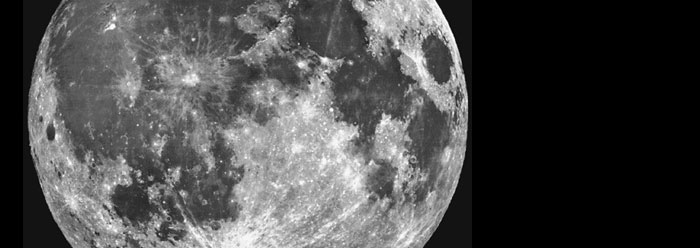But if the moon is billions of years old, it should not have had a magnetic field. It is too small to generate its own field. Ever since the moon landing, theorists have been trying to figure out how the moon could have been magnetized.
A recent report published in Nature suggested that perhaps the rotational axis of the moon's core was misaligned with the rotational axis of its mantle. This system, pulled by earth's gravity, could have acted as a "stirrer" and created turbulence inside the moon that might have generated a magnetic field.
The researchers' model suggests that at first, the moon's mantle and core would both have been molten and not magnetic. Much later, the core and hardening mantle mixed, making the moon magnetic. The Nature authors wrote that this "mechanically driven dynamo could persist for at least ~1.6Gyr [billion years]."1 Millions of years later, the moon had supposedly drifted far enough from the earth that the greater distance lessened the earth's gravitational pull and "switched off" the magnetic generator.
Lead author Christina Dwyer of the University of California, Santa Cruz, told Space.com, "Based on what we know about stirring, and everything we know about fluid motion, we can find no reason that this would not work."2
But this is unrealistically optimistic. The authors' supplemental material described four of the unique and required conditions for their model of the early moon. First, the fluid core must have been stirred with enough energy. According to the authors, the shape of the core and mantle today, along with other measurements, shows this is possible.
Second, "the core may have undergone a transition from co-precession to differential rotation as the Moon evolved outwards from the Earth."3 In other words, though the core and mantle would have rotated in lock-step initially when hot, they must somehow have been thrown out of sync when sufficiently cooled. Third, the model requires that the moon's partially melted interior was turbulently, not smoothly, stirred.
Finally, a magnetic field could only be generated by this model with a specific ratio of fluid thickness to heat distribution. But even with these conditions met, the model still falls short. No physical experiment has demonstrated how fluid motion can generate a magnetic field.4
And more hurdles remain. For example, the researchers had to first assume that the moon was once very close to earth. Also, the system depends on the moon's "precession," or wobble, to have lasted billions of years. And "the Moon's core is much smaller than the Earth's core, and the Moon rotates much slower than the Earth. If a dynamo is unlikely for the Earth, then how much more unlikely would one be for the Moon?"4
Each additional constraint reduces the model's realism. And even after waiving these problems, there remains no scientific reason why molten fluids would generate a magnetic field.
However, a creation-based explanation published in 1984 for the moon's magnetic field provides a plausible reason for the magnetism that was present when moon rocks formed. God "could have created many of the Earth's original atomic nuclei with their spins pointing in a particular direction," and likewise for the moon and other planets.5 The added effect of all these aligned atomic magnets would have generated a magnetic field that decayed soon after as the moon's atoms randomized.
This model readily explains why the moon's magnetic field existed when moon rocks were formed and why it has since diminished. The fact that the moon once had a magnetic field follows from this creation model and does not suffer from any of the issues that the secular models must overcome.
References
- Dwyer, C. A., D. J. Stevenson, and F. Nimmo. 2011. A long-lived lunar dynamo driven by continuous mechanical stirring. Nature. 479 (7372): 212-214.
- Moskowitz, C. Mystery of Moon's Lost Magnetism Solved? Space.com. Posted on space.com November 9, 2011, accessed November 18, 2011.
- Dwyer, A long-lived lunar dynamo driven by continuous mechanical stirring, Supplementary Information, 3.
- Humphreys, D. R. The Moon's former magnetic field. Creation Ministries International. Posted on creation.com November 15, 2011, accessed November 29, 2011.
- Humphreys, D. R. 1984. The Creation of Planetary Magnetic Fields. Creation Research Society Quarterly. 21 (3).
Image credit: NASA
* Mr. Thomas is Science Writer at the Institute for Creation Research.
